Mhoro - Hello in Shona
-
Mhoro is a common greeting in Shona. We present to you some interesting information about the language and the people who speak the language.
In case you are one of them who speak Shona and wish to report inconsistencies, please reply to this topic.
Shona is a Bantu language of the Shona people of Zimbabwe. It is one of the most widely spoken Bantu languages and some of the Shona words are similar to Swahili.
Here are some interesting things about the Shona language and its speakers, that you would love to know:
According to Ethnologue, Shona, comprising the Karanga, Zezuru, Ndau, Manyika, and Korekore dialects, is spoken by about 10.8 million people.
It is one of the official languages in Zimbabwe and enjoys the support of the majority as it is spoken by all the people of the ethnic group known as Shona.
Besides Zimbabwe, Shona people are found in Botswana and southern Mozambique in Southern Africa and bordering South Africa.
The tongue is written in Latin script and has five vowels. The vowels are pronounced just the way they are in Spanish.
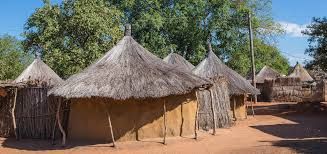
(Image Courtesy: https://mapanzure.wordpress.com/)In rural areas, a simple homestead of the Shona tribe usually has four huts: one for the kitchen, one as a master bedroom, one as a hut for the boys of the family, and another for the girls. Generally, there is also a small hut that is used as a granary by the family.
A village of the Shona tribe is headed by a village headman who answers to the chief. The chief usually has more than ten headmen under his jurisdiction and he also acts as a judge.
In this community, traditional healers recommend Scientific medicines which are obtained from plants and have been developed through trial and error, experimentation, and systematic observation over a long period.
The Shona people practice farming grains such as millet, sorghum, and maize. They also farm sweet potatoes and groundnuts. They are known to rear cattle, which are a symbol of wealth and are mainly used for draft power, and milk.
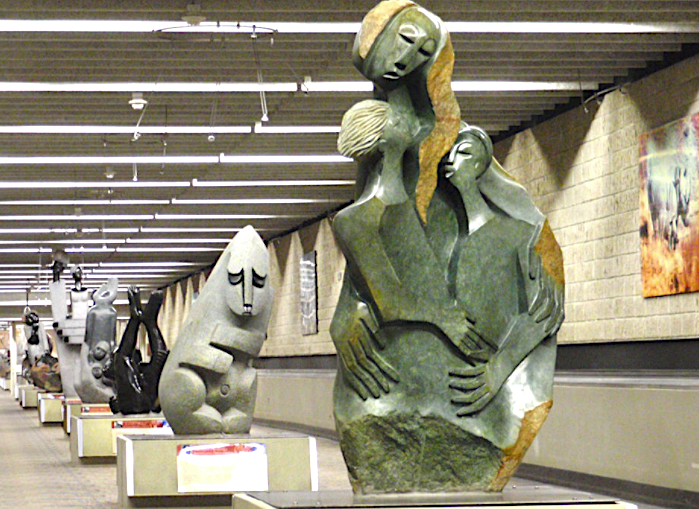
(Image Courtesy: https://mapanzure.wordpress.com/)The ancestors of the Shona built great stone cities in Southern Africa over a thousand years ago. It’s no wonder that this inheritance has led to Zimbabwe being world-renowned for its stone sculptures. Among the Shona, sculpting is not only an art but a means of expressing the relationship between the physical and spiritual worlds. Through this skill which is passed down through generations, sculptors can explore legends, ancestry, belief, and even the human condition.
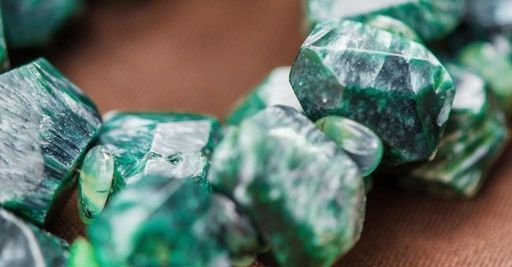
(Image Courtesy: https://consciousitems.com/)The indigenous stones were a huge guide for the Shona Sculptors – the popular ones were green, brown, and black serpentine, opal, spring stone, leopard rock, verdite, rapoko, and red jasper. The work of new artists continues to evolve but remains culturally specific and representative of Shona belief and myth.
Drawing on ancient sculpting traditions, the Shona people have produced a modern art movement of dignified, exquisite works. Reminiscent of Picasso and Henry Moore, these extraordinary, intense works speak to all humanity.
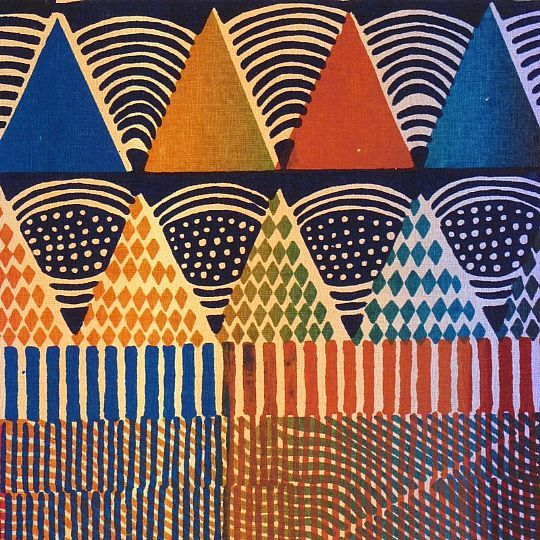
(Image Courtesy: https://www.africanfabric.co.uk/)The Shona Tribe of Zimbabwe has a rich artistic heritage, which includes decorative fabric painting using Sadza which is a Maize, a primary basis of their diet, instead of wax. The Shona Designs often use traditional geometric patterns mixed with stylized objects from everyday Shona life.
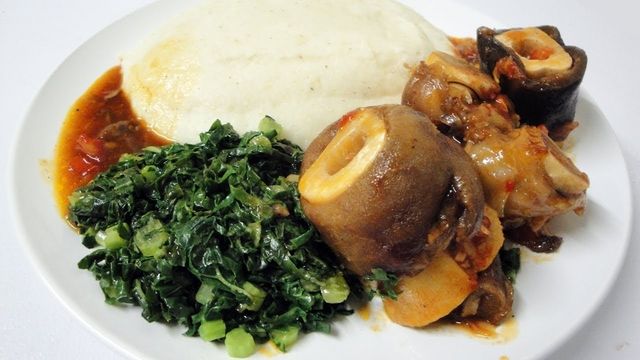
(Image Courtesy: https://alchetron.com/)In the Shona household, Maize (corn) is grounded into a fine meal, which is then cooked with water until it is the consistency of mashed potato. Although eaten plain, Sadza is often served with a vegetable or meat sauce to give it flavor. Apart from maize, common foods of the tribe are cereals, meat and meat products, milk and milk products, vegetables, groundnuts, and other foods including soft and alcoholic drinks. During the winter, people face shortages of fresh foods thus they adopt major methods to preserve food throughout the year.
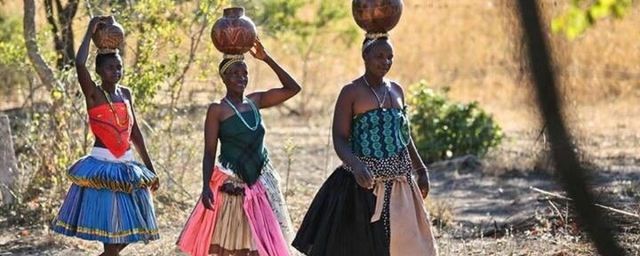
(Image Courtesy: https://alchetron.com/)Even before 1200 AD, the Shona people were wearing cotton body wraps. The married and older women wore a shoulder strapped garment while young women wore a simple strapless bodycon wrap with bare shoulders.
Hope you like it, if you know any other fascinating facts about Shona, let us all know!
Source: https://wikimili.com/
https://www.universal-translation-services.com/
https://theculturetrip.com/
https://colors-newyork.com/
https://yorksshonagallery.com/
https://www.africancraftsmarket.com/ -
Mhoro is a common greeting in Shona. We present to you some interesting information about the language and the people who speak the language.
In case you are one of them who speak Shona and wish to report inconsistencies, please reply to this topic.
Shona is a Bantu language of the Shona people of Zimbabwe. It is one of the most widely spoken Bantu languages and some of the Shona words are similar to Swahili.
Here are some interesting things about the Shona language and its speakers, that you would love to know:
According to Ethnologue, Shona, comprising the Karanga, Zezuru, Ndau, Manyika, and Korekore dialects, is spoken by about 10.8 million people.
It is one of the official languages in Zimbabwe and enjoys the support of the majority as it is spoken by all the people of the ethnic group known as Shona.
Besides Zimbabwe, Shona people are found in Botswana and southern Mozambique in Southern Africa and bordering South Africa.
The tongue is written in Latin script and has five vowels. The vowels are pronounced just the way they are in Spanish.

(Image Courtesy: https://mapanzure.wordpress.com/)In rural areas, a simple homestead of the Shona tribe usually has four huts: one for the kitchen, one as a master bedroom, one as a hut for the boys of the family, and another for the girls. Generally, there is also a small hut that is used as a granary by the family.
A village of the Shona tribe is headed by a village headman who answers to the chief. The chief usually has more than ten headmen under his jurisdiction and he also acts as a judge.
In this community, traditional healers recommend Scientific medicines which are obtained from plants and have been developed through trial and error, experimentation, and systematic observation over a long period.
The Shona people practice farming grains such as millet, sorghum, and maize. They also farm sweet potatoes and groundnuts. They are known to rear cattle, which are a symbol of wealth and are mainly used for draft power, and milk.

(Image Courtesy: https://mapanzure.wordpress.com/)The ancestors of the Shona built great stone cities in Southern Africa over a thousand years ago. It’s no wonder that this inheritance has led to Zimbabwe being world-renowned for its stone sculptures. Among the Shona, sculpting is not only an art but a means of expressing the relationship between the physical and spiritual worlds. Through this skill which is passed down through generations, sculptors can explore legends, ancestry, belief, and even the human condition.

(Image Courtesy: https://consciousitems.com/)The indigenous stones were a huge guide for the Shona Sculptors – the popular ones were green, brown, and black serpentine, opal, spring stone, leopard rock, verdite, rapoko, and red jasper. The work of new artists continues to evolve but remains culturally specific and representative of Shona belief and myth.
Drawing on ancient sculpting traditions, the Shona people have produced a modern art movement of dignified, exquisite works. Reminiscent of Picasso and Henry Moore, these extraordinary, intense works speak to all humanity.

(Image Courtesy: https://www.africanfabric.co.uk/)The Shona Tribe of Zimbabwe has a rich artistic heritage, which includes decorative fabric painting using Sadza which is a Maize, a primary basis of their diet, instead of wax. The Shona Designs often use traditional geometric patterns mixed with stylized objects from everyday Shona life.

(Image Courtesy: https://alchetron.com/)In the Shona household, Maize (corn) is grounded into a fine meal, which is then cooked with water until it is the consistency of mashed potato. Although eaten plain, Sadza is often served with a vegetable or meat sauce to give it flavor. Apart from maize, common foods of the tribe are cereals, meat and meat products, milk and milk products, vegetables, groundnuts, and other foods including soft and alcoholic drinks. During the winter, people face shortages of fresh foods thus they adopt major methods to preserve food throughout the year.

(Image Courtesy: https://alchetron.com/)Even before 1200 AD, the Shona people were wearing cotton body wraps. The married and older women wore a shoulder strapped garment while young women wore a simple strapless bodycon wrap with bare shoulders.
Hope you like it, if you know any other fascinating facts about Shona, let us all know!
Source: https://wikimili.com/
https://www.universal-translation-services.com/
https://theculturetrip.com/
https://colors-newyork.com/
https://yorksshonagallery.com/
https://www.africancraftsmarket.com/@agentcarter These are all interesting. Have you considered doing some Canadian First Nations ones, such as Tanse (Cree) or Boozhoo (Ojibwe)?
-
@agentcarter These are all interesting. Have you considered doing some Canadian First Nations ones, such as Tanse (Cree) or Boozhoo (Ojibwe)?
@mapmakere Hi, Thank you for your suggestion. You can check the blog about Ojibwe here,:arrow_down:
-
Mhoro is a common greeting in Shona. We present to you some interesting information about the language and the people who speak the language.
In case you are one of them who speak Shona and wish to report inconsistencies, please reply to this topic.
Shona is a Bantu language of the Shona people of Zimbabwe. It is one of the most widely spoken Bantu languages and some of the Shona words are similar to Swahili.
Here are some interesting things about the Shona language and its speakers, that you would love to know:
According to Ethnologue, Shona, comprising the Karanga, Zezuru, Ndau, Manyika, and Korekore dialects, is spoken by about 10.8 million people.
It is one of the official languages in Zimbabwe and enjoys the support of the majority as it is spoken by all the people of the ethnic group known as Shona.
Besides Zimbabwe, Shona people are found in Botswana and southern Mozambique in Southern Africa and bordering South Africa.
The tongue is written in Latin script and has five vowels. The vowels are pronounced just the way they are in Spanish.

(Image Courtesy: https://mapanzure.wordpress.com/)In rural areas, a simple homestead of the Shona tribe usually has four huts: one for the kitchen, one as a master bedroom, one as a hut for the boys of the family, and another for the girls. Generally, there is also a small hut that is used as a granary by the family.
A village of the Shona tribe is headed by a village headman who answers to the chief. The chief usually has more than ten headmen under his jurisdiction and he also acts as a judge.
In this community, traditional healers recommend Scientific medicines which are obtained from plants and have been developed through trial and error, experimentation, and systematic observation over a long period.
The Shona people practice farming grains such as millet, sorghum, and maize. They also farm sweet potatoes and groundnuts. They are known to rear cattle, which are a symbol of wealth and are mainly used for draft power, and milk.

(Image Courtesy: https://mapanzure.wordpress.com/)The ancestors of the Shona built great stone cities in Southern Africa over a thousand years ago. It’s no wonder that this inheritance has led to Zimbabwe being world-renowned for its stone sculptures. Among the Shona, sculpting is not only an art but a means of expressing the relationship between the physical and spiritual worlds. Through this skill which is passed down through generations, sculptors can explore legends, ancestry, belief, and even the human condition.

(Image Courtesy: https://consciousitems.com/)The indigenous stones were a huge guide for the Shona Sculptors – the popular ones were green, brown, and black serpentine, opal, spring stone, leopard rock, verdite, rapoko, and red jasper. The work of new artists continues to evolve but remains culturally specific and representative of Shona belief and myth.
Drawing on ancient sculpting traditions, the Shona people have produced a modern art movement of dignified, exquisite works. Reminiscent of Picasso and Henry Moore, these extraordinary, intense works speak to all humanity.

(Image Courtesy: https://www.africanfabric.co.uk/)The Shona Tribe of Zimbabwe has a rich artistic heritage, which includes decorative fabric painting using Sadza which is a Maize, a primary basis of their diet, instead of wax. The Shona Designs often use traditional geometric patterns mixed with stylized objects from everyday Shona life.

(Image Courtesy: https://alchetron.com/)In the Shona household, Maize (corn) is grounded into a fine meal, which is then cooked with water until it is the consistency of mashed potato. Although eaten plain, Sadza is often served with a vegetable or meat sauce to give it flavor. Apart from maize, common foods of the tribe are cereals, meat and meat products, milk and milk products, vegetables, groundnuts, and other foods including soft and alcoholic drinks. During the winter, people face shortages of fresh foods thus they adopt major methods to preserve food throughout the year.

(Image Courtesy: https://alchetron.com/)Even before 1200 AD, the Shona people were wearing cotton body wraps. The married and older women wore a shoulder strapped garment while young women wore a simple strapless bodycon wrap with bare shoulders.
Hope you like it, if you know any other fascinating facts about Shona, let us all know!
Source: https://wikimili.com/
https://www.universal-translation-services.com/
https://theculturetrip.com/
https://colors-newyork.com/
https://yorksshonagallery.com/
https://www.africancraftsmarket.com/@agentcarter interesting!!
-
Mhoro is a common greeting in Shona. We present to you some interesting information about the language and the people who speak the language.
In case you are one of them who speak Shona and wish to report inconsistencies, please reply to this topic.
Shona is a Bantu language of the Shona people of Zimbabwe. It is one of the most widely spoken Bantu languages and some of the Shona words are similar to Swahili.
Here are some interesting things about the Shona language and its speakers, that you would love to know:
According to Ethnologue, Shona, comprising the Karanga, Zezuru, Ndau, Manyika, and Korekore dialects, is spoken by about 10.8 million people.
It is one of the official languages in Zimbabwe and enjoys the support of the majority as it is spoken by all the people of the ethnic group known as Shona.
Besides Zimbabwe, Shona people are found in Botswana and southern Mozambique in Southern Africa and bordering South Africa.
The tongue is written in Latin script and has five vowels. The vowels are pronounced just the way they are in Spanish.

(Image Courtesy: https://mapanzure.wordpress.com/)In rural areas, a simple homestead of the Shona tribe usually has four huts: one for the kitchen, one as a master bedroom, one as a hut for the boys of the family, and another for the girls. Generally, there is also a small hut that is used as a granary by the family.
A village of the Shona tribe is headed by a village headman who answers to the chief. The chief usually has more than ten headmen under his jurisdiction and he also acts as a judge.
In this community, traditional healers recommend Scientific medicines which are obtained from plants and have been developed through trial and error, experimentation, and systematic observation over a long period.
The Shona people practice farming grains such as millet, sorghum, and maize. They also farm sweet potatoes and groundnuts. They are known to rear cattle, which are a symbol of wealth and are mainly used for draft power, and milk.

(Image Courtesy: https://mapanzure.wordpress.com/)The ancestors of the Shona built great stone cities in Southern Africa over a thousand years ago. It’s no wonder that this inheritance has led to Zimbabwe being world-renowned for its stone sculptures. Among the Shona, sculpting is not only an art but a means of expressing the relationship between the physical and spiritual worlds. Through this skill which is passed down through generations, sculptors can explore legends, ancestry, belief, and even the human condition.

(Image Courtesy: https://consciousitems.com/)The indigenous stones were a huge guide for the Shona Sculptors – the popular ones were green, brown, and black serpentine, opal, spring stone, leopard rock, verdite, rapoko, and red jasper. The work of new artists continues to evolve but remains culturally specific and representative of Shona belief and myth.
Drawing on ancient sculpting traditions, the Shona people have produced a modern art movement of dignified, exquisite works. Reminiscent of Picasso and Henry Moore, these extraordinary, intense works speak to all humanity.

(Image Courtesy: https://www.africanfabric.co.uk/)The Shona Tribe of Zimbabwe has a rich artistic heritage, which includes decorative fabric painting using Sadza which is a Maize, a primary basis of their diet, instead of wax. The Shona Designs often use traditional geometric patterns mixed with stylized objects from everyday Shona life.

(Image Courtesy: https://alchetron.com/)In the Shona household, Maize (corn) is grounded into a fine meal, which is then cooked with water until it is the consistency of mashed potato. Although eaten plain, Sadza is often served with a vegetable or meat sauce to give it flavor. Apart from maize, common foods of the tribe are cereals, meat and meat products, milk and milk products, vegetables, groundnuts, and other foods including soft and alcoholic drinks. During the winter, people face shortages of fresh foods thus they adopt major methods to preserve food throughout the year.

(Image Courtesy: https://alchetron.com/)Even before 1200 AD, the Shona people were wearing cotton body wraps. The married and older women wore a shoulder strapped garment while young women wore a simple strapless bodycon wrap with bare shoulders.
Hope you like it, if you know any other fascinating facts about Shona, let us all know!
Source: https://wikimili.com/
https://www.universal-translation-services.com/
https://theculturetrip.com/
https://colors-newyork.com/
https://yorksshonagallery.com/
https://www.africancraftsmarket.com/@agentcarter liked the geometric patterns of the traditional fabric painting, amazing!

